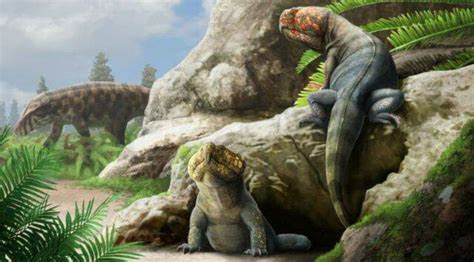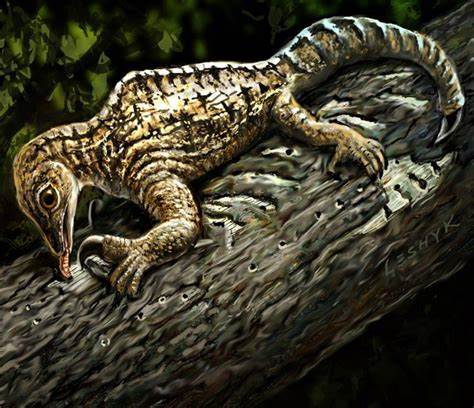In the study published in the journal Diversity earlier this month, researchers describe the new rhynchosaur species.
“Beesiiwo was not particularly big,” study co-author David Lovelace said to Live Science. Based on his estimates, an adult member of the species probably weighed between five to seven kilograms and must have been around 60 centimetres long. Lovelace is a vertebrate palaeontologist at the University of Wisconsin-Madison.
Paleontologists identified the remains of the herbivorous reptile, which is a stem, or early archosaur and therefore a distant relative of modern-day birds and crocodiles, as a new genus and species of rhynchosaur, a group of plant eaters defined by their parrot-like beaks. The team described the newly identified species, which they dubbed Beesiiwo cooowuse, in a study published April 10 in the journal.

Between 250 and 270 million years ago, a bizarre beaked reptile that is related to both modern crocodiles and birds roamed the Earth. Beesiiwo cooowuse, its name, means “big lizard of the Alcova area,” since that part of Wyoming in the United States is where its fossils were found.
According to the University of Wisconsin-Madison, Beesiiwo cooowuse is the first Western-science species to be named in the language of the native American Arapaho people. The fossils of the species were found in the ancestral lands of the people.
In total, paleontologists unearthed five rhynchosaur specimens at the Popo Agie Formation, a Triassic geological formation located in the Bighorn Mountains, part of the northern Rocky Mountains. Three of the specimens, including fragments of upper and lower jawbones, belonged to the new species.
Because the fossils were located on Native American land, the researchers partnered with leaders from the Northern Arapaho Tribal Historic Preservation Office to name the new species Beesiiwo cooowuse, which, in the Arapaho language, means “big lizard from the Alcova area” of central Wyoming, according to a statement.

The researchers believe that the reptile was herbivorous but they do not yet know what kind of plants it ate. Lovelace speculates that the beaked mouth could have been used for stripping or clipping leaves but there is no direct evidence that points to this. From plant and pollen remains from the area, the researchers know that there were conifers, ferns and horsetail plants that could have contributed to the lizard’s diet.
The fossils were collected from the Popo Agie Formation, which is a portion of exposed rock in parts of the Rocky Mountains. According to Interesting Engineering, a total of five different rhynochorus specimens were collected from the rocky formation.
“We do know from paleo pollen and plant remains that there were definitely conifers, ferns and horsetail plants around that may have contributed to its diet,” Lovelace said. Its beaked mouth “could very well have been used for stripping or clipping leaves, but again, there is no direct evidence of this that I know of.”
Researchers can only speculate the specific plants that it ate.


